Season Summary
The vegetable aspect of the College Farm has enjoyed a prosperous and productive 2024 so far. The year is marked with steadfast commitment to excellent soil stewardship, impactful infrastructural improvements, dialing in systems for efficient production, and a handful of yield records despite some very unique weather and pest challenges. Our perseverance in the face of those challenges is a testament to the enthusiasm of our team and the strength of our model of diversified, climate change mitigated agriculture.
In spring, we had strong greenhouse and transplant production season. We utilized our greenhouses to supply Dining Services and Farm Works with fresh greens and other products for the spring semester. We also grew about 80,000 transplants that we later planted in our vegetable fields to become our crops. Getting them off to an optimal start was critical in final crop performance.
In April, in advance of the apprentices arriving, we removed the aging covers of the yurts and installed new insulation and new covers. Physics major and longtime Farm Student Worker Gavin Frueh ’24 rebuilt the base to our root washer. The new set up includes a leveraged dumping feature that makes it much easier and safer to wash the tons of carrots we produce each year.
In May, we invested time to establish a new, perennial herb garden. We have found that herbs are a very low-cost product that adds valuable variety to the CSA and farmer’s market offerings. The herbs planted there should produce for several years with little additional work.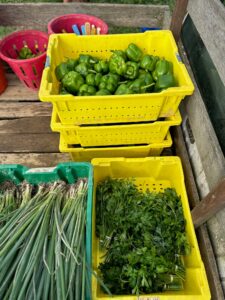
June is typically a very busy month on the College Farm with onboarding, orienting, and training for the season. Usually, irrigation isn’t too much of a concern, but this June we found ourselves irrigating nearly constantly in addition to our normal work. The severe drought in June was uniquely challenging across all of our late spring and summer crops. Spring broccoli, cauliflower, and cabbage suffered greatly from drought pressure and subsequent insect pressure. It was very difficult to establish our early summer lettuces and greens that usually flourish in June rains, as well as our marquee main season crops like tomatoes, peppers, and sweet potatoes.
The upside of a dry June was that the crew spent less time pulling weeds by hand than we normally do. This surplus labor was leveraged across the farm in several impactful ways. First, the vegetable growing team assisted the livestock team in fence row cleaning as well as the removal of debris and invasive plant species throughout the pastures. We also rehabilitated the greenhouse that formerly housed the biogas initiative’s pilot project. This included removing the defunct infrastructure, re-grading the interior, and repurposing the house to more efficiently cure the firewood that heats the yurts and bakes the farm pizzas. And lastly, we redoubled commitment to our groundhog initiative.
Since the summer of 2023 the vegetable team at the College Farm has been engaged in a calculated effort to combat groundhog herbivory in production fields. Our focus has been to destroy long established groundhog habitat to discourage annual colonization of the farm. This includes trapping live hogs, collapsing the tunnel systems, filling those systems in, and reseeding the soil. The team spent several hot days with weedwhackers, shovels, picks, rakes, and tractors to destroy dozens of tunnel systems in a 12-acre perennial pasture adjacent to production fields.
Vegetable Production:
This year, we endeavored to grow eighty-three distinct fresh product lines. Despite the challenges of the season, we enjoyed record setting production in several key crops.
|
2024 Yield Highlights |
|
|||||
|
Broccoli |
1346 |
Lbs. |
* |
† |
|
|
|
Butternut Squash |
1089 |
Each |
|
† |
|
|
|
Cabbage |
983 |
Heads |
* |
|
|
|
|
Carrot |
4169 |
Lbs. |
|
|
|
|
|
Cauliflower |
689 |
Lbs. |
* |
† |
|
|
|
Cherry Tomatoes |
1196 |
Pints |
* |
|
|
|
|
Cucumbers |
2482 |
Lbs. |
|
|
|
|
|
Garlic |
17900 |
Heads |
|
|
|
|
|
Green Beans |
389 |
Lbs. |
|
† |
|
|
|
Herbs |
3615 |
Bunches |
|
† |
|
|
|
Kale |
1728 |
Bunches |
* |
† |
|
|
|
Lettuce |
2130 |
Heads |
|
† |
|
|
|
Lettuce Mix |
1691 |
Lbs. |
* |
† |
|
|
|
Napa Cabbage |
341 |
Each |
* |
† |
|
|
|
Onions |
5896 |
Each |
|
† |
|
|
|
Potatoes |
8985 |
Lbs. |
|
† |
|
|
|
Spinach |
634 |
Lbs. |
|
† |
|
|
|
Strawberries |
1252 |
Pints |
|
† |
|
|
|
Summer Squash |
1739 |
Lbs. |
|
|
|
|
|
Sweet Corn |
2555 |
Ears |
|
|
|
|
|
Sweet Potatoes |
5657 |
Lbs. |
|
† |
|
|
|
Tomatoes |
5128 |
Lbs. |
|
|
|
|
|
Watermelon |
1194 |
Each |
|
† |
|
|
|
Zucchini |
1547 |
Lbs. |
|
|
|
|
|
* Still harvesting at time of report |
||||||
|
† Increased from 2023 Yield |
||||||
We are proud of the yields outlined above but aware that they do not tell the whole story. Ever eager to improve performance and efficiency, we strive to collect important data and interpret that data to make informed planting and sales decisions.
One important metric is yield per planting size. This gives a picture of the overall crop performance and is easy to compare yields to other years, and other growers. Yield per planting can be difficult to tease out for some crops because the margin of data entry error becomes very high. But other crops that are “one and done” are much easier to track.
Example: Potatoes performed incredibly well this year. They shattered our previous record of yield per row feet. We mostly attribute that success to good soil stewardship in the field, an earlier than normal planting, and a new irrigation protocol this year.
|
Potatoes at the College Farm |
||||||||
|
|
2024 |
2023 |
2022 |
2021 |
2020 |
2019 |
2018 |
2017 |
|
Yield (Lbs.) |
8134 |
5136 |
4829 |
6526 |
4050 |
5262 |
3549.5 |
6629 |
|
Row Feet |
4455 |
3570 |
4425 |
4500 |
6110 |
5320 |
4390 |
7060 |
|
Yield/Growth |
1.83 |
1.44 |
1.09 |
1.45 |
0.66 |
0.99 |
0.81 |
0.94 |
We also use this metric to evaluate variety performance. For most of our crops we grow more than one variety as a hedge against underperformance of one of the varieties. It also affords us the opportunity to see which varieties grow best on our farm and inform future variety selection.
Example: Watermelon. We succeeded in controlling both disease and insects the heat-loving watermelon crop through August. As a result, we harvested more than ever before, over five tons of melons. We grew four varieties to hone down which ones do best for us. Of course, the most important metric of watermelons is flavor. Students, apprentices, and farm staff took on the grueling task of evaluating the four varieties’ eating quality through a blind taste test. With this data, we can focus on the better performing and better tasting varieties next year.
|
Variety |
Taste Index Ranking (1-4, 1 being the best) |
Row Feet planted |
Final Yield (each) |
Yield/ Row Feet (each) |
Average Weight |
Approx. Yield/Bdft (lbs.) |
Comments |
|
Sugar Baby |
3.25 |
450 |
600 |
1.33 |
6.9 |
9.20 |
Seeded, Subpar texture and flavor |
|
Extazy |
2.5 |
100 |
204 |
2.04 |
7.85 |
16.01 |
Seedless, Great texture and appearance |
|
Crimson Sweet |
2.42 |
375 |
259 |
0.69 |
14.45 |
9.98 |
Seeded, Large for wholesale, Very Sweet |
|
Cracker Jack |
1.83 |
125 |
131 |
1.05 |
10.7 |
11.21 |
Seedless, Large for wholesale, Great texture |
|
Total |
|
1050 |
1194 |
1.14 |
9.975 |
10.37 |
|
At the conclusion of 2023, we identified a few crops that we over-produced: cucumbers, zucchini, summer squash, and tomatoes. We intentionally grew less of those crops this year while still satisfying our existing market demand.
Other crops that did not exceed 2023 production:
- Cabbage: We are still harvesting cabbage and will likely greatly exceed 2023 production by the end of the season.
- Carrots: We terminated an entire wave of carrots in June for poor germination due to drought stress. About 10% of our fall carrot crop was washed out by the 8/9 deluge.
- Garlic: Garlic production is determined by the amount of seed garlic grown the year before. Seed garlic is an important source of revenue for the farm, and we withheld less than normal for our own planting last year. Despite that, good plant care yielded a very healthy, and large bulbed crop of garlic this year. In October of this year, we planted 21,960 garlic seed cloves that should each yield a very marketable bulb next July.
- Sweet corn: As noted above, the sweet corn harvest was unfortunately compromised by a heretofore unseen pest on the College Farm. Otherwise, we would’ve likely harvested a lot more sweet corn this year than last. We are currently working on strategies for deer management next growing season.
Also in 2023, we identified strawberries as a production strength of the College Farm. In August of 2023 we committed to doubling our planting of berries for production in 2024 (berries are a planted the year before harvest). That doubled planting yielded a huge crop of berries for the year across a wider than normal harvest window. This afforded us an important revenue stream early in the season. This was so successful, that in August of this year, we planted even more berries for the 2025 production season.
Join our CSA or visit us at Farmers on the Square to see the results of our production in 2025!
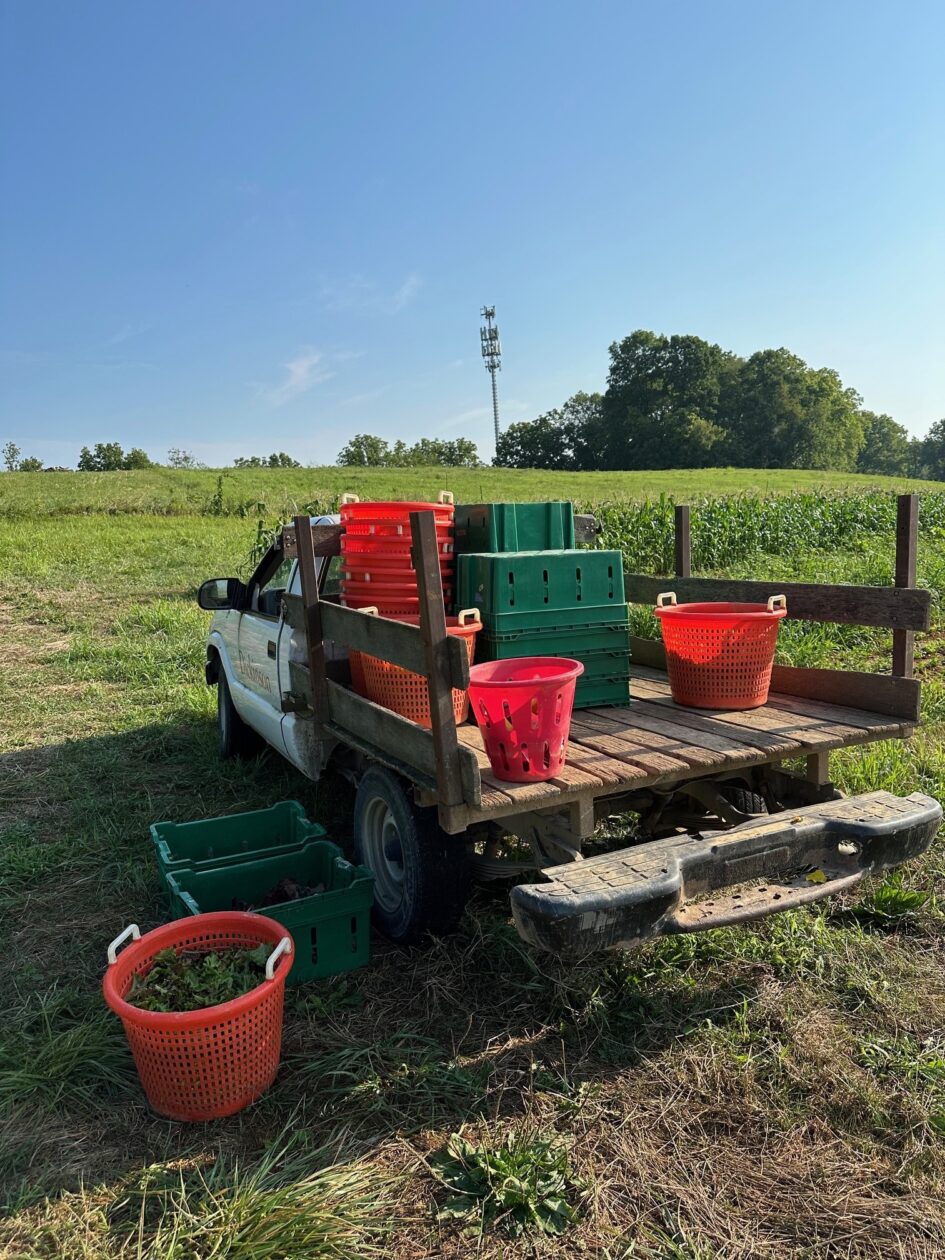
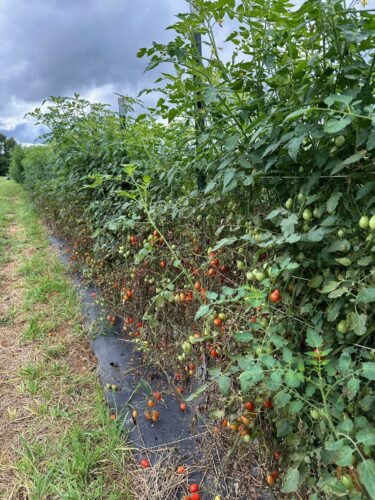

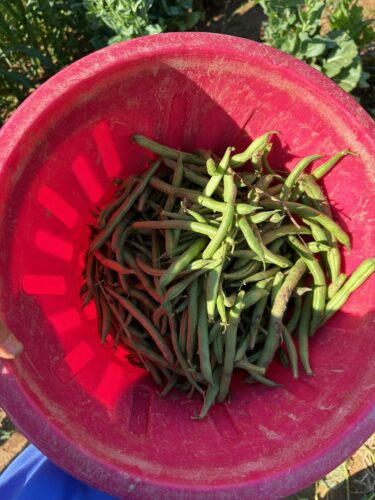
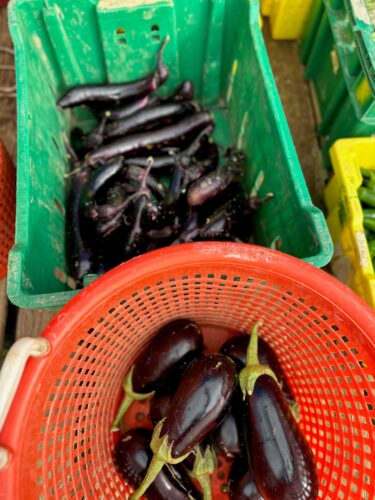
Leave a Reply